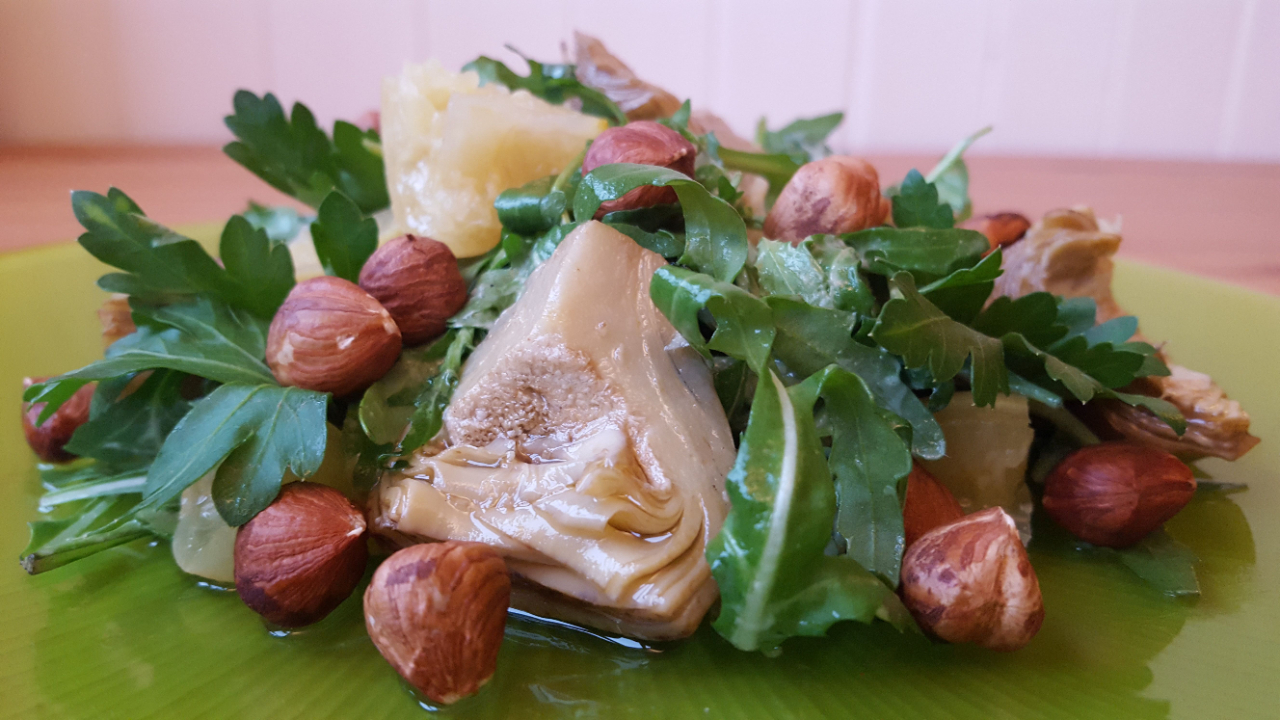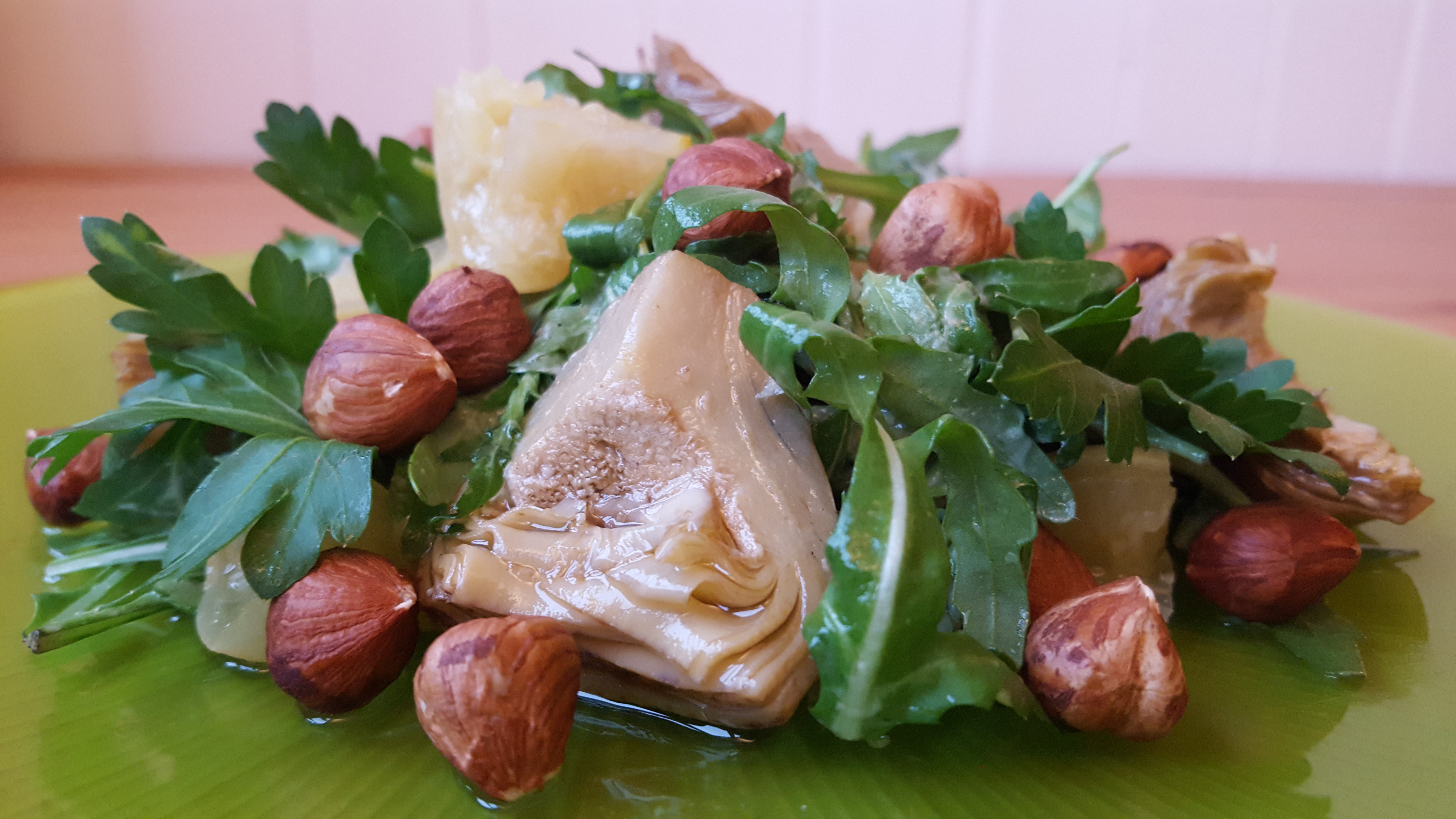This is a classic middle Eastern combination with the preserved lemons and artichokes supporting bile and digestive juice flow to whet the appetite before a meal. Even though it seems quite exotic, it is easy to prepare and the artichokes and preserved lemons can be bought in glass jars and keep well stored. The dressing can also be used on any other salads and will keep for a good few weeks; as well its garlic and apple cider vinegar, the olive oil and mustard also support liver function.
RECIPE
Serves: 1-2
Prep time: 10 minutes
Cooking time: 10 minutes
The Vital Role of the Liver in Whole Health
After 50 Whole Health webinars and so much information gathered, it feels timely to bring together some key insights. This week, we turn to the liver. It may seem like a leap from the feet to the liver, but in reality, everything is interconnected.
The liver sits tucked under the right side of the rib cage, nestled against the diaphragm, with the stomach on the other side. How we stand, breathe, and allow our diaphragm to move creates circulation, pulsation, and lymphatic flow - all of which are crucial for liver function.
The Liver: A Multifunctional Organ
The liver is believed to have around 600 functions that we know of, influencing virtually every aspect of whole health. Movements that open the rib cage and fascia, and encourage diaphragmatic breathing, directly support its optimal function.
One of the liver’s major roles is in digestion. It manufactures bile, which is released into the duodenum (the first part of the small i...
Walking Meditation: Finding Presence Step by Step
Walking is the most natural of movements. In this meditation, we use it to bring awareness inward - into the body, into sensation, and into presence - as we meet the ground step by step.
Walking meditations can be particularly helpful when we feel anxious, agitated, or caught in the head. They offer a clear, grounding connection, giving us a palpable sense of the earth beneath us. For hundreds of years, walking meditations have been part of contemplative traditions, helping cultivate awareness of motion and of our place in the world, not to get somewhere, but simply to feel the movement itself.
Beginning the Practice
The practice begins in stillness. Stand with your feet hip-width apart. Loosen the body with gentle bouncing or jiggling, letting movement travel everywhere, even through the jaw and face. Gradually, settle into your feet with soft knees, becoming aware of your presence in this moment.
Before even taking a step, ...
Nine Foundations of Whole Health
After 50 Whole Health webinars and all the information gathered together, it felt like the right time to pull together some of the most pertinent themes.
This chapter focuses on Feet, Grounding & Calm; our foundations. From where we stand, our relationship with gravity, and how this influences our awareness, nervous system, posture, and even the health of our liver.
3. Feet, Grounding & Calm: Foundations for Stability & Awareness
Our feet are the base support for our legs, hips, spine, head, and everything that stacks above them. Just as buildings and plants need solid foundations and roots, so do we.
When we feel our feet and where we stand, we connect into an embodied awareness of our whole nervous system and our breath. This links directly to the stress states we inhabit, whether we’re caught in heightened responses or able to come down into more relaxed tones.
 Our Relationship with Gravity
Our Relationship with Gravity
Unless we are in water, gravit...
Many of us love a vessel to load up our favourite ingredients on – goat’s cheese, houmous, guacamole, mackerel pate – for a quick meal or snack, where we can also add a vegetable portion easily. Adding cucumber, watercress, beetroot, tomato or avocado (yes I know the last two are fruit!) provides bulk to satisfy appetite as well as soluble fibre for blood sugar balance, not to mention the rich mineral, vitamin and bioflavonoid components for optimal health.
Flax (or chia) seeds are the foundational component in raw crackers as they create a mucilage when soaked that has a binding effect; which is why many vegans use either seeds as an egg substitute. This also works as a great gluten alternative to reduce amounts of this protein that can be rather harsh on the gut wall as so difficult for us to digest. Whether you have a gluten intolerance and a full-on inflammatory response to gluten or not, the inclusion of gluten grains in our diets (as wheat, rye and barley) can be a strain on t
...Nine Foundations of Whole Health
After an amazing 50 Whole Health webinars, it felt like the right time to focus on some key themes and choose nine to thread together the multifactorial ways we can look after our health through nutrition, movement, lifestyle, awareness and self-care.
In this chapter, we explore one of the most essential and evolving aspects of our health - the microbiome. Often overlooked, yet deeply influential, the trillions of microbes that live within and on us are fundamental to how we digest, think, feel and respond to the world.
 Microbiome & Gut Health: The Inner Ecosystem
Microbiome & Gut Health: The Inner Ecosystem
The microbiome is now widely recognised as the foundation of many aspects of health, particularly through its presence in the gut - but also in the skin, lungs, mouth, anus and genitalia. These microbes form the interface between us and the environment, shaping the way we absorb, protect, and interact with the world around us.
We’re not just hosting these microbes - we evolved...
A hearty portion of vegetables with a meal provides the soluble fibre and minerals so important to steady blood sugar levels and eliminate waste products that we need to function efficiently. None more so than members of the brassicas family, or cruciferous vegetables, such as cabbage, broccoli, kale and cavolo nero. Here, the red cabbage also adds in the antioxidant purple colour of proanthocyanidins that encourage circulation and support nervous system function.
The spices in this dish are also thermogenic or heat-creating to raise metabolism and efficient use of fuel. They also all have blood sugar-regulating properties, particularly cinnamon, which contains an antioxidant called MCHP that has shown to mimic the effects of insulin and allow us to use the sugars from carbohydrates more effectively. It also tells our brains we have had something sweet without upsetting blood sugar levels, so curbs the highs and lows of blood sugar imbalances, whilst quenching cravings.
RECIPE
...Nine Foundations of Whole Health
After an amazing 50 Whole Health webinars, it felt like the right time to focus on some key themes and choose nine to thread together the multifactorial ways we can look after our health through nutrition, movement, lifestyle, awareness and self-care.
To give you a flavour of the webinars, we'll share these key points as separate ‘chapters’ with you here, starting with the basis for regulating our energy, mood, sleep, metabolism and beyond - blood sugar balance. This sets the scene to explore the other themes, with the foundation in the relationships between our food choices, cravings and stress.
1. Blood Sugar Balance: A Foundational Key to Energy, Mood & Resilience
In today’s world, where quick energy and constant stimulation are the norm, imbalanced blood sugar is one of the most common, yet overlooked, drivers of fatigue, mood swings, cravings, and even deeper health issues.
Regulating blood sugar is key to managing energy, mood, cravings...
First published in Om Magazine
Yoga beyond just making shapes 
If you’ve come to this blog, there’s a strong possibility that you have an interest in yoga beyond perfecting your downwards-facing dog. The enduring nature of this mind-body system lies in how it provides a practical philosophy – to be felt, explored, woven into life and ultimately, how it can change our neural pathways and mind-sets to view the world from a whole different perspective.
I explore how our yoga practice can simply, naturally and beautifully feed out to improve the quality of our lives. Through subtle, but profound changes in our responses, brain chemistry and habits, we can find ourselves listening to our needs more. Attuning to what makes us healthy and happy can mean choices that serve us and those around us better in the long-term.
This is one of the many ways a dedicated yoga practice (that isn’t simply about acrobatics and external appearance) allows us to de-stress and cope with life’s cha...
 Dry skin brushing is an easy, quick and pleasurable way to add to your health and as something physical that you can do yourself (or with someone else?) at home, also adds a fantastic sense of ‘looking after yourself’. It helps to keep your skin healthy, which contributes to overall body health - clogged pores are really not just a cosmetic concern.
Dry skin brushing is an easy, quick and pleasurable way to add to your health and as something physical that you can do yourself (or with someone else?) at home, also adds a fantastic sense of ‘looking after yourself’. It helps to keep your skin healthy, which contributes to overall body health - clogged pores are really not just a cosmetic concern.
The main aim behind skin brushing idea is to get rid of surface toxins and 'energise' your skin to get blood flow going. As your skin is your largest organ and the second organ of detoxification after the liver, brushing it increases the capacity of your skin to eliminate toxins, making it easier for your whole body to shed wastes. Dry skin brushing also rejuvenates the nervous system by stimulating nerve endings in the skin, contributes to healthier muscle tone and better distribution of fat deposits – in other words helps to reduce cellulite! Since you're actually brushing over every piece of skin you have, your lymphatic system responds...
Recognising when we may be overwhelmed, anxious or agitated is the first step to be able to choose the self-care we need. We can play a very real part in supporting our capacity to self-soothe and come down from heightened, reactive states, by a nutritional foundation alongside mindful, embodied practices and plenty of time in nature.
 Stress & nutritional choices:
Stress & nutritional choices:
How linked do you feel to our more hirsute animal relatives?
Along with four-chambered hearts, warm blood and producing milk to nourish our offspring, we humans are linked to all of our mammalian cousins by the presence of a covering of body hair. But humans appear to feel the need to separate themselves more and more from our “animal” roots by removing any hair that springs up that is not on our heads. Where beards and male body hair were once seen as a sign of strength and virility, a mass industry has evolved to literally ‘nip these in the bud’ and the term “The Naked Ape” is becoming more and more relevant.
 The fact that body hairlessness is linked to the sexual sign for femininity seems to be fading; rather showing large expanses of hairless flesh is a display now linked to healthiness, perhaps from a time where less hair meant less parasites. Stone-age flint and shell razors have been found, alongside cave paintings of men removing hair from their faces, so this has been a ...
The fact that body hairlessness is linked to the sexual sign for femininity seems to be fading; rather showing large expanses of hairless flesh is a display now linked to healthiness, perhaps from a time where less hair meant less parasites. Stone-age flint and shell razors have been found, alongside cave paintings of men removing hair from their faces, so this has been a ...












